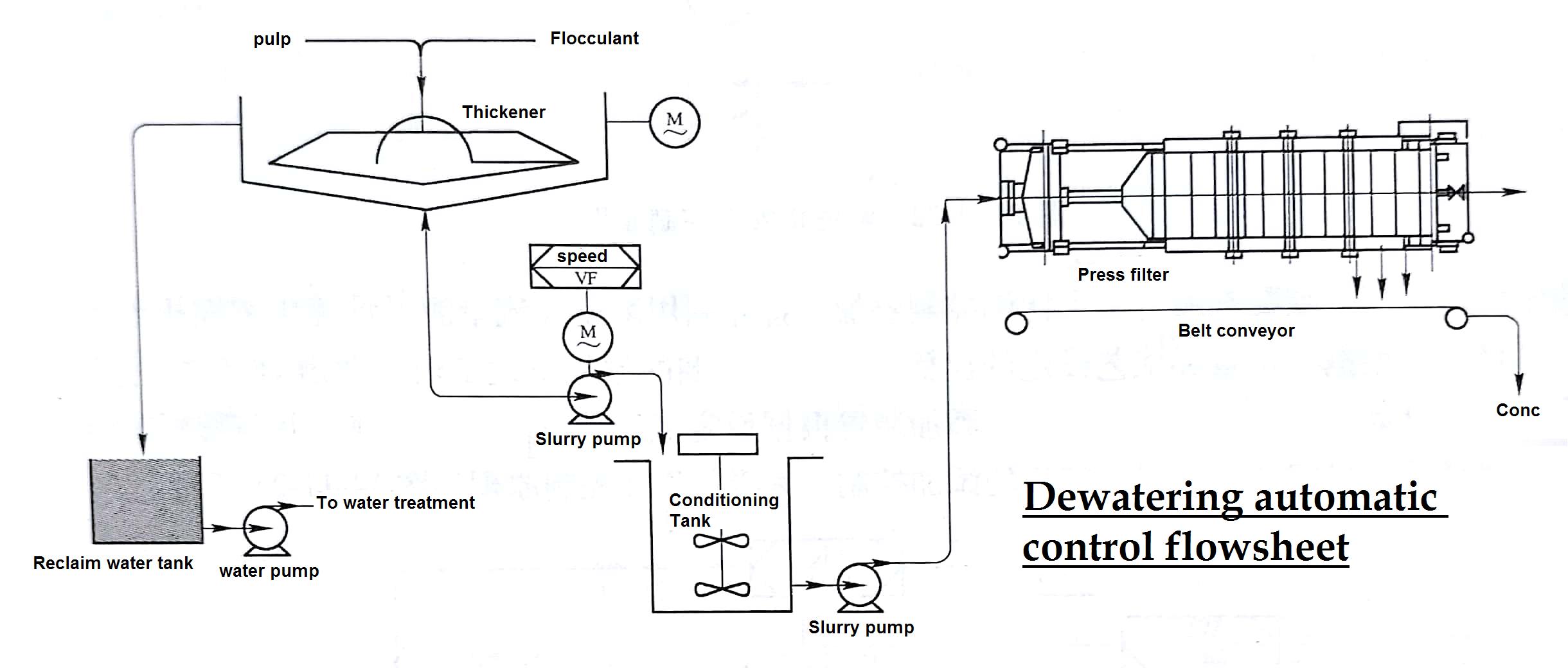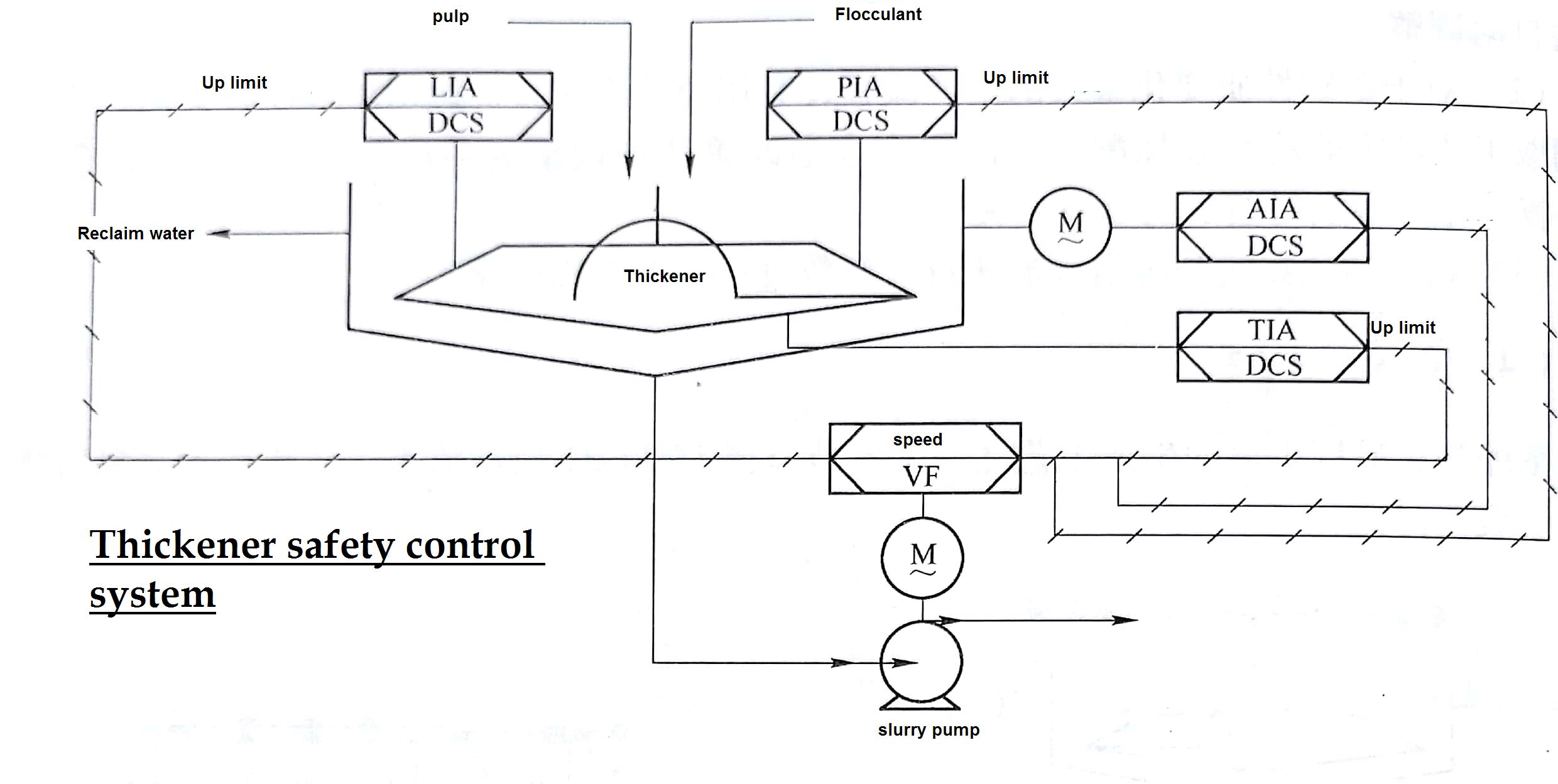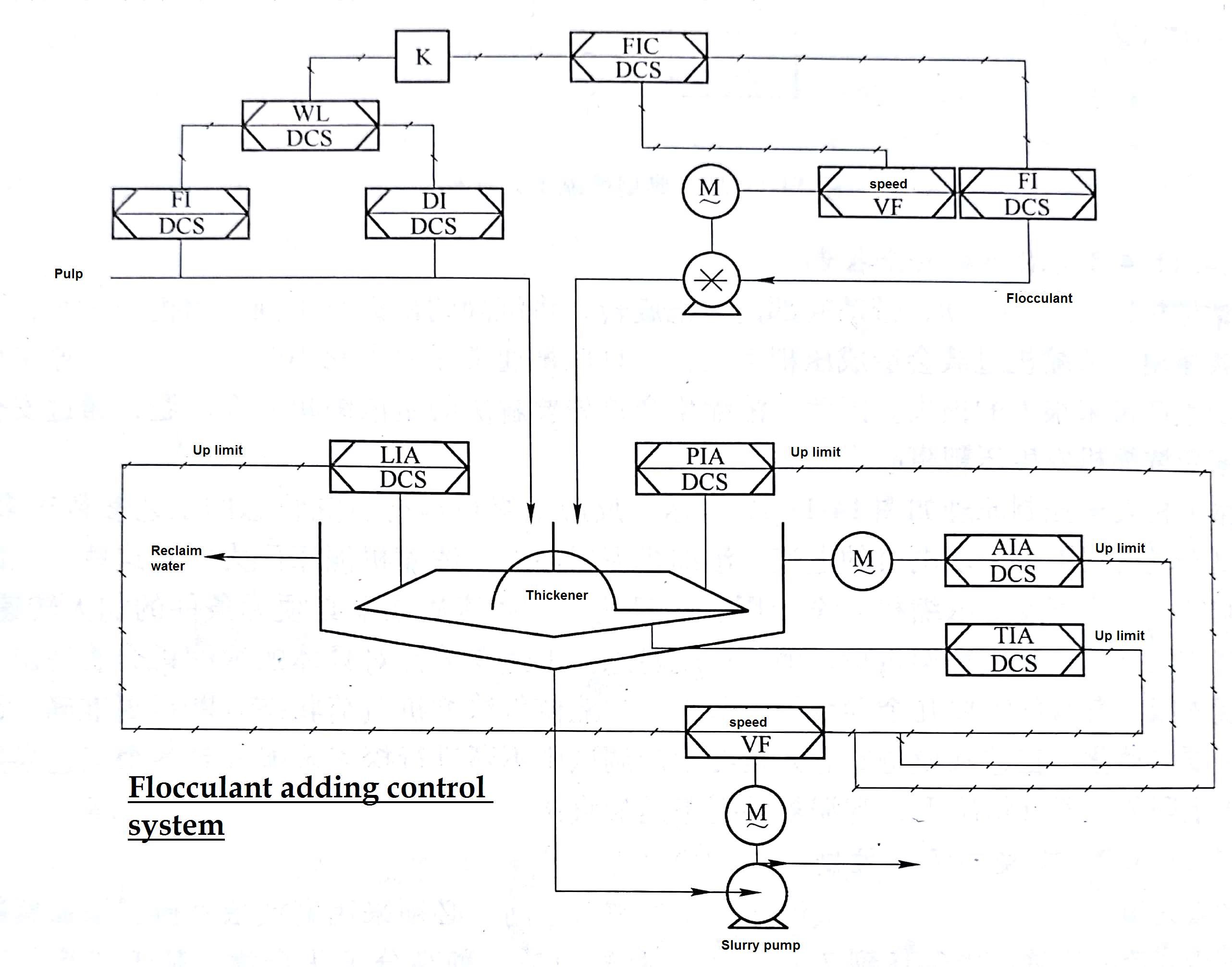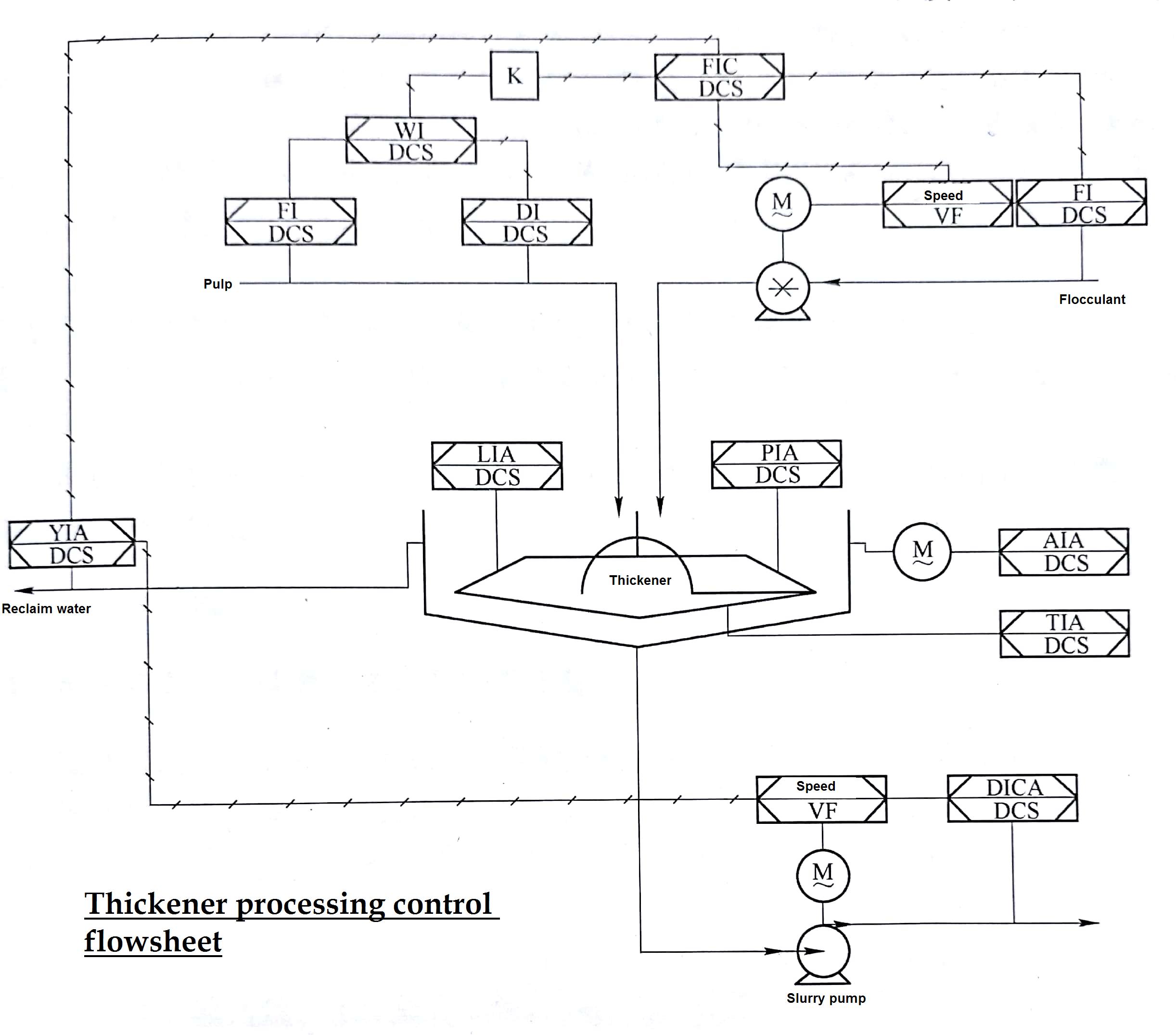This article describes the latest beneficiation automatic control technology that Sinonine has mastered.
Part3:Thickener automatic control.
Thickening is one of the most important production processes in mineral processing plant, Figure 1 is a concentrating process in common.

1.Thickener safety control
The motor drives the thickener, the bottom mud scraping rake rotation, the settlement of slime on cone bottom, to facilitate the pulp discharged. Overload will cause the pressure rake thickener, once the pressure rake usually need to stop treatment ten hours or even days, bring great loss to the production. Therefore, the concentrated production is the first to solve security problems through the security control of thickener, avoid occurrence pressure rake accident.
Thickener safety control principle shown in figure 2. Reflect the process parameters of thickener running load status, including torque, motor current, mud scraping rake thickener mud layer thickness, mud bed pressure thickener. These parameters are bound to a certain extent, reaction thickener security up limit, once reached, the underflow slurry pump must unconditionally increase the speed, will drain away, reduce slime rake load as soon as possible, eliminate hidden dangers of pressure rake. The parameters for the specific enrichment opportunities show different priority, sometimes need several parameters together, in order to make the judgment more accurate load thickener. Therefore, it is necessary for the professionals of automation, process and equipment to continue to explore the production and debugging in order to find the reasonable upper limit of each process parameter. Normally, the torque of the scraper is the most direct process parameter, and the priority should be the highest.

Fig2. Thickener safety control principle
2.Flocculant dosing control
With the development of the process of filling, demand more and more high concentration underflow concentration, must adopt efficient thickener, adding flocculant,so as to the underflow slurry concentration can reach more than 70%. Flocculant is a kind of polymer compound. Based on the "coalescence theory", it can accelerate the combination of solid particles in the pulp and increase the volume, thus accelerating the settlement of minerals. In the process of mineral properties and stable situation, usually by adding flocculant proportion control, the concentration and flow rate calculated into the amount of ore concentrator dry, according to dry setting ore and process was calculated as the ratio of the flocculant dosage set value, and DCS is "transmit" to the flocculant automatic adding device. The automatic dosing device of flocculant adjusts the speed of the metering pump according to the set value and forms a closed loop with the flowmeter of the flocculant solution to ensure accurate addition control. The principle of flocculant dosing control is shown in Figure 3.

Fig3. Principle of flocculant dosing control
3.Thickener process control
Thickener settlement mechanism is extremely complicated, different ores, size of material and different mineral slurry concentration, the settlement characteristics of different. The faster the speed of sedimentation, pulp in time should stay in the thickener is shorter, otherwise the current mud layer growth rate too fast, the mud scraping rake torque and drive motor rapidly, it is prone to overload shutdown; settling velocity is slower, stay in the time of pulp thickener should be longer, otherwise the underflow pulp is not up to the concentration, causing water loss and increase the energy consumption of dehydration production. Therefore, the core of concentrated process control is underflow slurry pump speed, timely adjustment according to the different working state changed pulp discharge, making pulp obtained reasonable residence time.
Another key problem of thickening process control is to maintain the material balance. The material balance destroyed the underflow concentration is too high, or "muddy running", caused by the overflow pressure rake; or underflow concentration is low, do not ensure the solid-liquid separation effect, resulting in a waste of resources.
The main indicators of production is concentrated underflow slurry concentration, the higher the concentration, the solid-liquid separation efficiency is higher; second is the overflow water clarity, clarity is high, which shows that the settling effect is better. Clarity is affected by the internal settlement of layered thickener overflow, if the mud layer is too high or mineral deposition speed, solid particles in the slurry will not continue to clarify diffuse settlement area, resulting in "muddy running ".
Thickening process control principle as shown in Figure 4, which is the core of the underflow slurry pump as the actuator, the underflow concentration for the closed-loop controlled parameter control. Secondly, monitoring the overflow water clarity, when the "muddy running " phenomenon, if the mud scraping rake not overload, it should adjust the amount of flocculant accelerate settlement stratification; if the rated load is close to the mud scraping rake, then add in the adjustment of flocculant, it should take up the underflow slurry pump speed. On the one hand, to eliminate the overload danger, on the other hand to create more space for the settlement of minerals, improve the effect of settling thickener.

Fig4. Thickening process control principle
The difficulty of thickener control is the limited operating variables (refer to the actuator ), with many parameters, the implementation of control should be considered, mutual coordination, prevent the care for this and lose that. Thickening control is an important means of recycling water resources and energy conservation and emission reduction. When implementing, it should be carried out according to the principles of safety first, stability second and index optimization third. In the stage of index optimization control, we need to analyze the correlation between controlled variables and operational variables and their working intervals by modeling, so as to formulate effective and effective control strategies.
---Crushing and screening automatic control